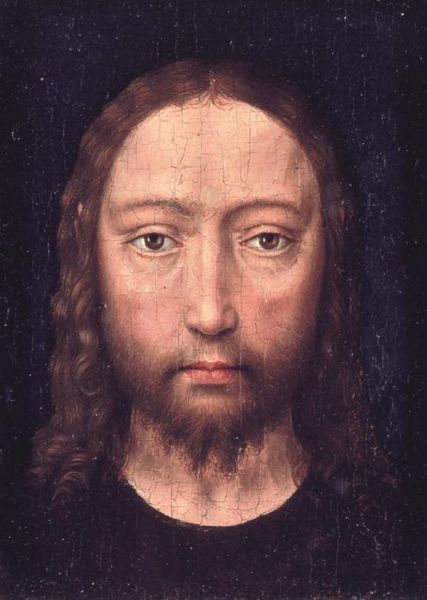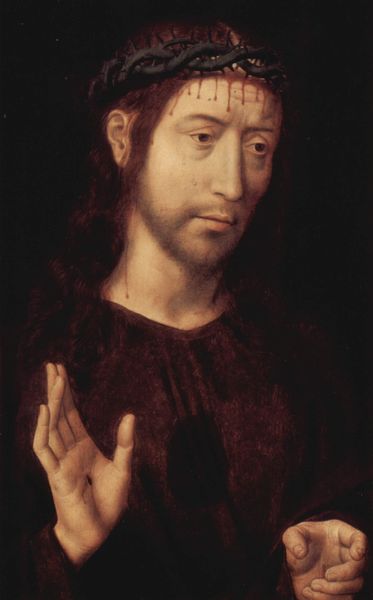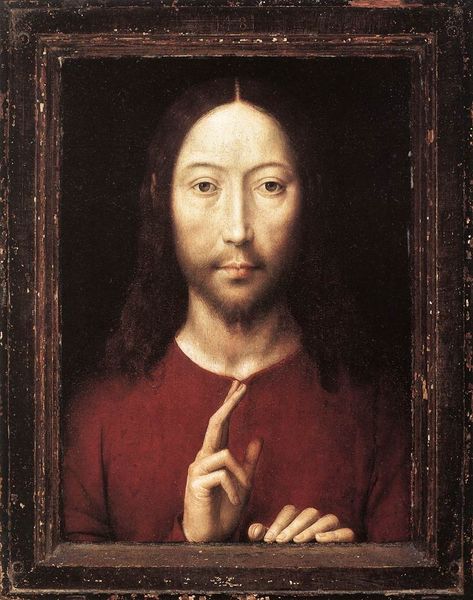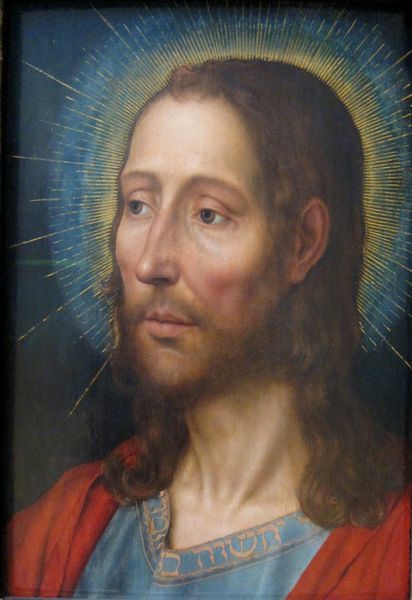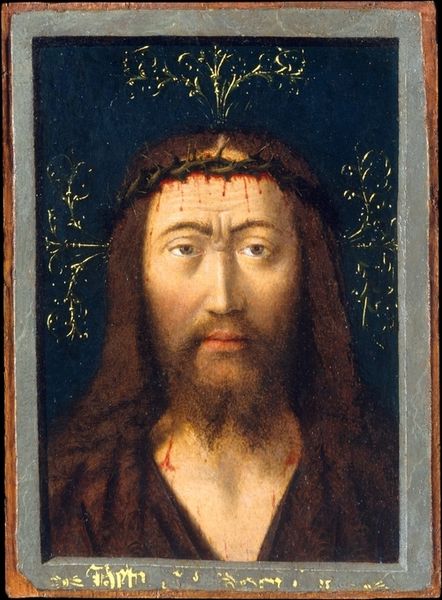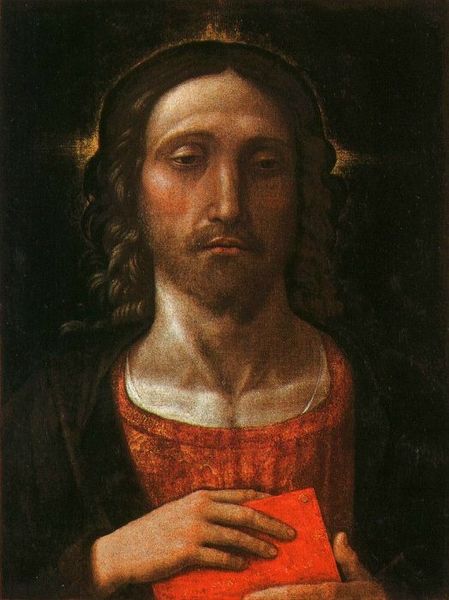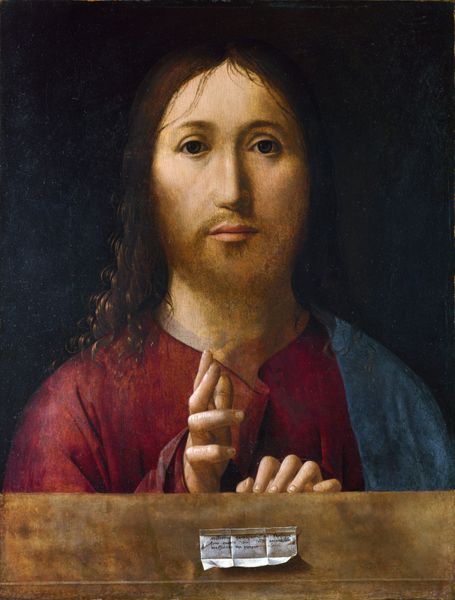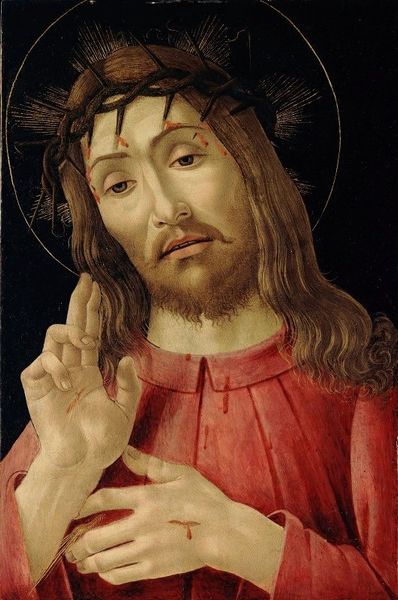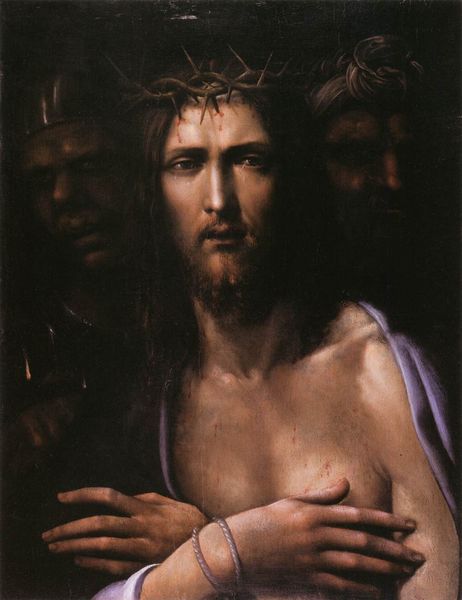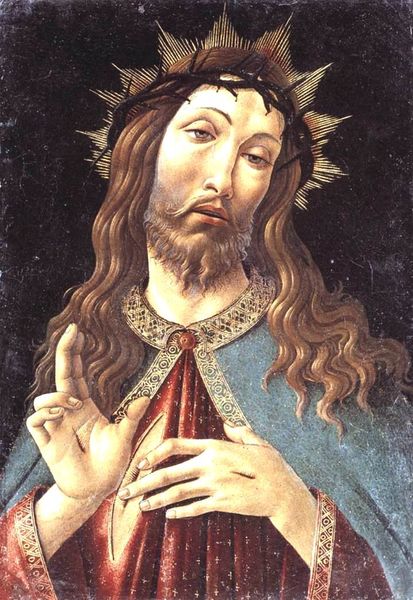
painting, oil-paint
#
portrait
#
face
#
portrait image
#
portrait
#
painting
#
oil-paint
#
figuration
#
portrait reference
#
portrait head and shoulder
#
flemish
#
portrait drawing
#
history-painting
#
facial portrait
#
early-renaissance
#
portrait art
#
fine art portrait
#
realism
#
celebrity portrait
#
digital portrait
Dimensions: 38 x 28 cm
Copyright: Public domain
Editor: Here we have Hans Memling's "Christ Giving His Blessing," painted in 1478, using oil paints. It's striking how the figure emerges from such a dark background, creating a very intense and focused image. How do you interpret this work? Curator: Notice how Memling presents Christ. It's not just a likeness, it's an icon, steeped in visual language. His hand, raised in benediction, that gesture wasn’t just a casual wave; it was a codified symbol recognized by all viewers then as a sign of divine blessing and authority. Editor: So the hand gesture carries specific meaning? Curator: Absolutely. The slightly parted fingers aren’t accidental; they evoke the Trinity. The gaze, direct and unwavering, connects with the viewer on a deeply personal level, inviting introspection. What emotions does that direct gaze trigger within you? Editor: It does feel very personal, almost intimate. But knowing the cultural context helps unpack layers beyond the surface. Curator: Exactly! Early Renaissance art like this often served didactic purposes – to teach and reinforce religious doctrines. Images were mnemonic devices, embedding cultural memory through symbolic representation. Editor: It’s amazing how much meaning can be packed into one image through symbolism. Curator: Indeed! Visual culture carries its history within, shaping our understanding and emotional responses, connecting us across centuries. And what did you take away from our conversation? Editor: I see how an artist would include culturally relevant signifiers to make an artwork understood beyond its pure aesthetic appreciation.
Comments
No comments
Be the first to comment and join the conversation on the ultimate creative platform.
